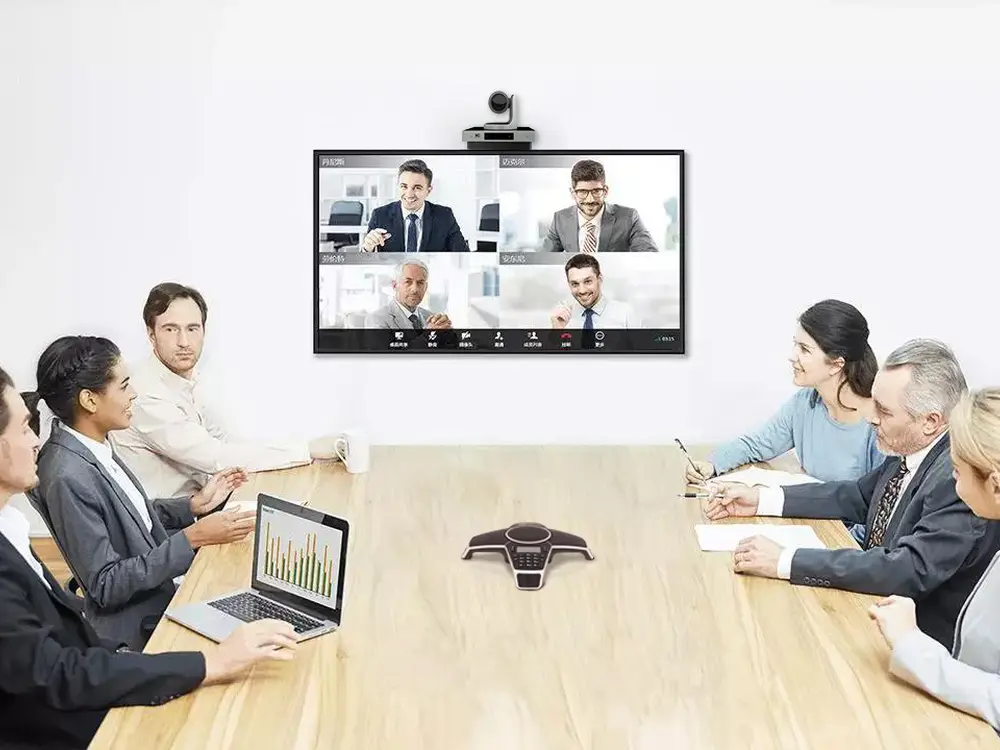
Explore the future of work with remote collaboration and video conferencing. Discover the benefits and challenges of virtual collaboration, the role of video conferencing in facilitating remote teamwork, and strategies for successful remote collaboration. Embrace the power of remote collaboration and video conferencing to unlock new levels of productivity and connectivity in the workplace.
Introduction
The way we work is undergoing a profound transformation, driven by advancements in technology and the changing expectations of employees. With the rise of remote work and distributed teams, organizations are increasingly relying on remote collaboration tools and video conferencing solutions to foster productivity and connectivity. In this article, we will explore the future of work, focusing on the crucial role of remote collaboration and video conferencing in shaping the modern workplace. From the benefits and challenges of virtual collaboration to strategies for successful remote teamwork, we will uncover the key elements that drive effective remote collaboration and the ways in which video conferencing technology enables seamless communication and collaboration.
Embracing Remote Collaboration
The Benefits of Remote Collaboration

Remote collaboration brings numerous benefits to both employees and organizations. It offers flexibility and work-life balance, allowing employees to work from anywhere, eliminating the constraints of geographical locations. This flexibility opens up opportunities for organizations to tap into a global talent pool, accessing diverse skill sets and perspectives. Remote collaboration also reduces the costs associated with office spaces and commuting, leading to increased cost savings for organizations. Additionally, virtual collaboration fosters inclusivity, accommodating individuals with various abilities and accommodating different working styles and preferences.
The Challenges of Remote Collaboration
While remote collaboration offers many advantages, it also presents unique challenges. Communication and coordination among remote team members can be more complex without the benefit of face-to-face interactions. Time zone differences, language barriers, and cultural nuances can add further complexity to virtual collaboration. Maintaining team cohesion and building relationships among remote team members require deliberate efforts. Overcoming these challenges requires effective communication strategies, the right tools and technologies, and a strong team culture built on trust, transparency, and accountability.
The Role of Video Conferencing
Enabling Seamless Communication
Video conferencing plays a vital role in bridging the gap between remote team members and facilitating seamless communication. It provides a visual and auditory connection that helps foster engagement, understanding, and relationship-building. Through video conferencing, team members can have real-time conversations, read non-verbal cues, and establish personal connections that go beyond mere text-based communication. The ability to see facial expressions, body language, and gestures enhances communication and fosters a sense of presence among team members, promoting collaboration and cooperation.
Facilitating Real-Time Collaboration
Video conferencing goes beyond communication; it also enables real-time collaboration. With features like screen sharing, file sharing, and virtual whiteboarding, team members can collaborate on projects, share ideas, and work together as if they were in the same physical location. The ability to view and edit documents simultaneously, annotate visuals, and brainstorm collectively promotes creativity, productivity, and efficiency. Video conferencing transforms virtual meetings into dynamic and interactive sessions, enabling teams to achieve their goals effectively.
Strategies for Successful Remote Collaboration
Clear Communication and Expectations
Clear communication is the foundation of successful remote collaboration. Establishing clear expectations, goals, and guidelines helps team members align their efforts and understand their roles and responsibilities. Regular and transparent communication channels ensure that everyone is on the same page, reducing misunderstandings and promoting effective collaboration. Setting aside dedicated time for team check-ins, virtual meetings, and updates helps foster collaboration and maintains team cohesion.
Utilizing Collaboration Tools
Effective remote collaboration relies on utilizing the right collaboration tools and technologies. Project management platforms, file-sharing systems, and instant messaging apps facilitate seamless information sharing, task management, and communication. Video conferencing software provides the means to conduct virtual meetings, presentations, and workshops. Leveraging these tools promotes efficiency, organization, and collaboration among remote teams.
Building Trust and Connection
Building trust and connection among remote team members is essential for successful collaboration. Regular team-building activities, both virtual and in-person when possible, help foster relationships and create a sense of camaraderie. Encouraging open and honest communication, providing opportunities for feedback, and recognizing individual and team achievements contribute to a positive team culture. Trust and connection form the basis for effective collaboration, driving productivity and engagement.
Emphasizing Documentation and Knowledge Sharing
In a remote collaboration setting, documentation and knowledge sharing become even more critical. Clear documentation of processes, workflows, and decisions helps keep everyone informed and aligned. Establishing a centralized knowledge-sharing system, such as a shared drive or a wiki, enables team members to access information and resources easily. Regular updates and post-project evaluations contribute to continuous learning and improvement, enhancing remote collaboration effectiveness over time.
Embracing the Future of Work
As the future of work unfolds, remote collaboration and video conferencing will continue to play a pivotal role in driving productivity, connectivity, and success. Embracing the benefits of remote collaboration, understanding the challenges, and leveraging video conferencing technology are essential for organizations and teams to thrive in the modern workplace. By adopting effective strategies for remote collaboration, utilizing the right tools, fostering trust and connection, and emphasizing documentation and knowledge sharing, organizations can unlock the full potential of remote collaboration and video conferencing, enabling their teams to achieve remarkable results in the virtual workspace.
Conclusion
In the rapidly evolving landscape of work, remote collaboration and video conferencing are shaping the future of how teams connect, communicate, and collaborate. Discover the benefits, challenges, and strategies for successful remote collaboration as we explore the vital role of video conferencing technology in enabling seamless communication and collaboration. Embrace the transformative power of remote collaboration and video conferencing to adapt, thrive, and excel in the evolving workplace.



